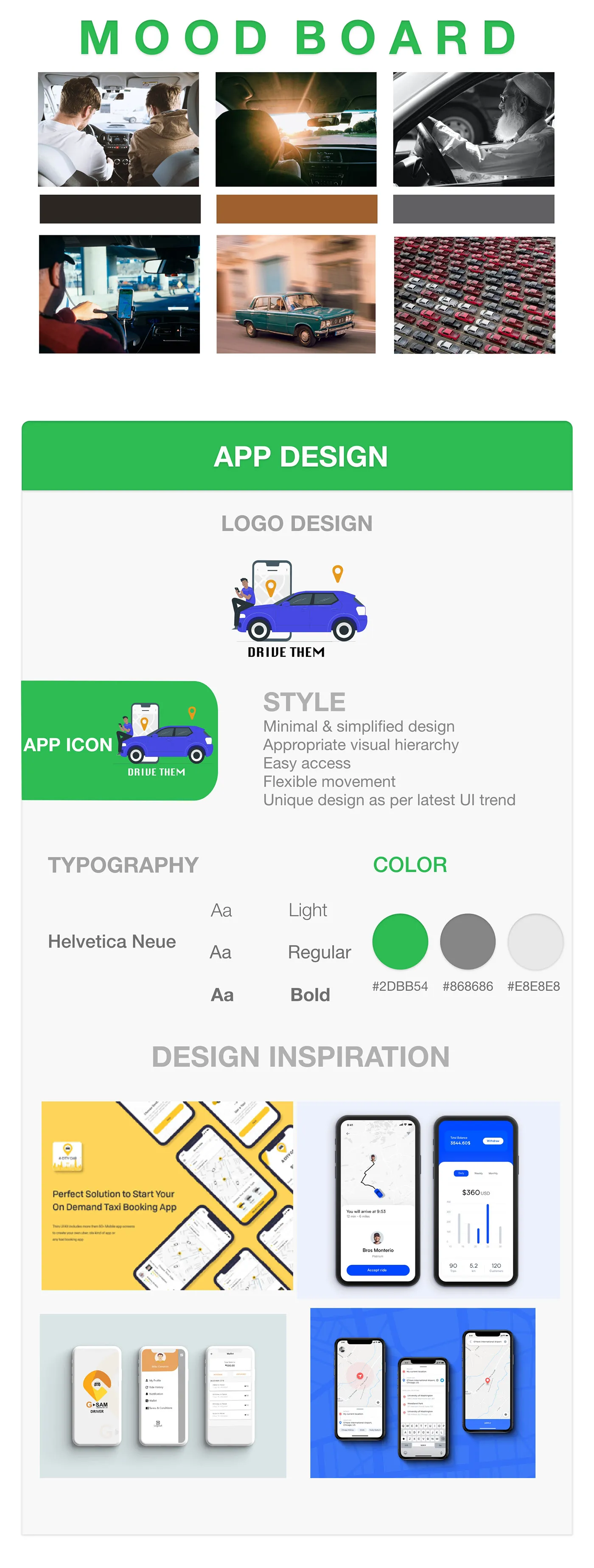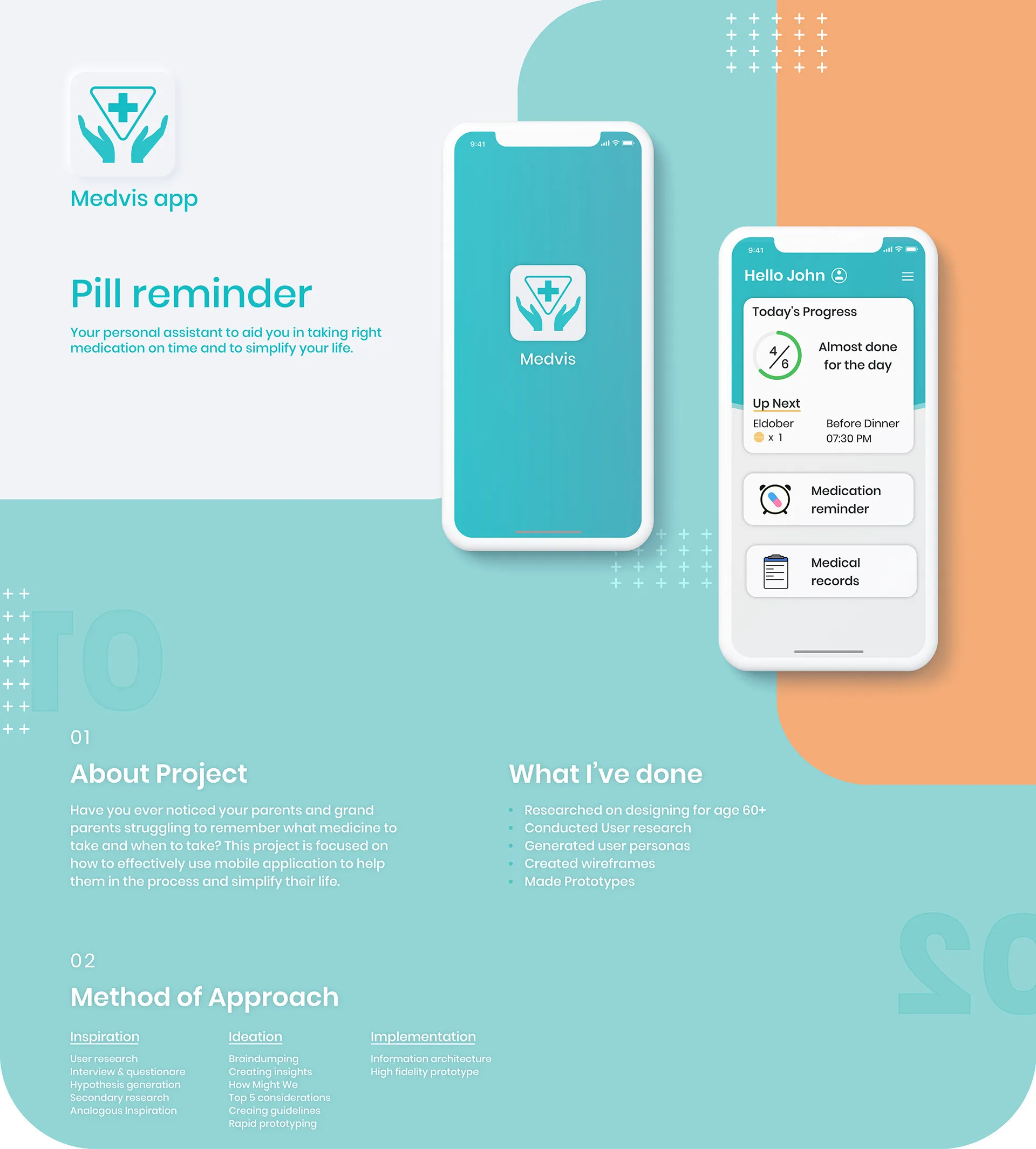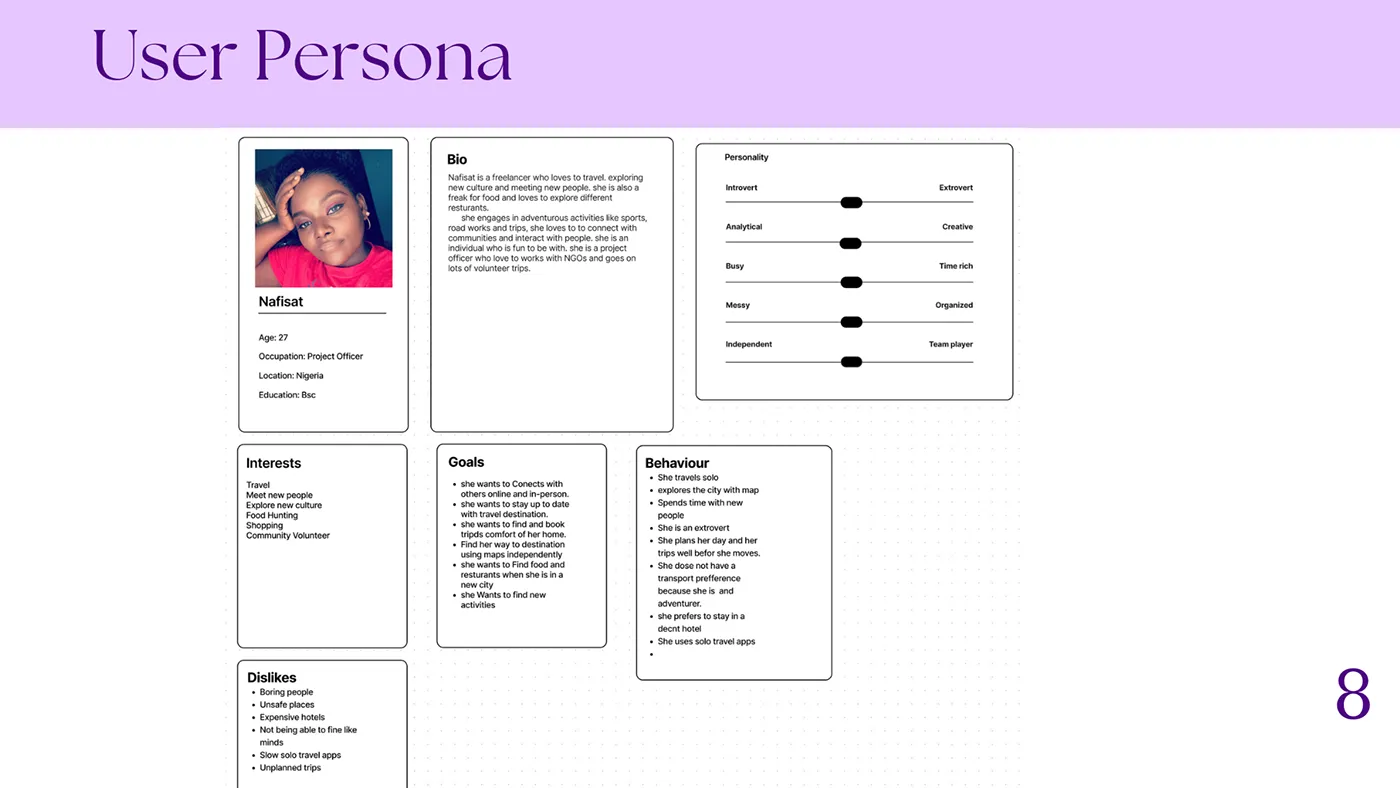Creating a User Experience (UX) portfolio is an essential step for anyone looking to break into the field of UX design. It serves as a visual resume, showcasing your skills, projects, and design thinking processes. A well-crafted portfolio not only highlights your technical abilities but also tells a story about who you are as a designer. In today’s competitive job market, having a standout portfolio can make all the difference in landing your dream job or project.
In essence, a UX portfolio should reflect your unique style and approach to design. It should include a range of projects that demonstrate your versatility, creativity, and problem-solving skills. Whether you’re a seasoned professional or just starting, your portfolio can evolve over time, adapting to showcase your latest and greatest work. With platforms like Behance making it easier than ever to present your work, let’s dive into why having a UX portfolio is crucial and why Behance might just be the perfect platform for you.
Why Choose Behance for Your UX Portfolio

When it comes to showcasing your UX portfolio, Behance stands out as a top choice for many designers. But why should you consider this platform over others? Here are some compelling reasons:
- Wide Audience Reach: Behance boasts millions of users, including designers, creative professionals, and potential employers. By hosting your portfolio here, you gain exposure to a vast audience who may discover your work.
- User-Friendly Interface: The platform is designed with ease of use in mind. You can easily upload your projects, arrange your layout, and customize your portfolio to reflect your personal style.
- Networking Opportunities: Behance provides a community where you can connect with other creatives, share feedback, and even collaborate on projects. This networking can lead to job opportunities and partnerships.
- Project Diversity: Whether you specialize in wireframing, usability testing, or visual design, Behance allows you to showcase a variety of projects. You can create detailed case studies that outline your process from start to finish.
- Integration with Adobe Creative Cloud: If you’re an Adobe user, you’ll appreciate the seamless integration. You can easily upload your work directly from Adobe tools, making the process quick and efficient.
In summary, Behance offers a robust platform tailored for creatives, making it an excellent choice for building and showcasing your UX portfolio. With its vast audience, user-friendly features, and networking potential, you’ll be well on your way to making your mark in the UX design world.
Also Read This: Editing Behance project tutorial
Step 1: Sign Up and Set Up Your Behance Account

Creating a UX portfolio on Behance starts with signing up for an account, and it's super easy! Just follow these simple steps:
- Visit Behance.net: Head over to the Behance website. You’ll be greeted with a vibrant community of creatives.
- Click on 'Sign Up': Look for the 'Sign Up' button, typically located at the top right corner of the homepage.
- Choose Your Method: You can either sign up using your email address or link your existing Adobe ID or social media accounts like Facebook or Google for a quicker registration.
- Fill Out Your Information: If you go with email, provide the necessary details, such as your name, email, and a password. Make sure your password is strong!
- Verify Your Account: Depending on your sign-up method, you may need to verify your email address by clicking on a link sent to your inbox.
Once you’re in, take a moment to set up your profile. Add a professional profile picture, write a catchy bio, and include links to your other social media or personal website. This will help potential clients or collaborators get a sense of who you are!
Don’t forget to explore existing portfolios on Behance. This can give you some inspiration and help you understand what works well in the UX domain.
Also Read This: How to Set a Password for YouTube on Your TV to Secure Your Account
Step 2: Define Your Portfolio Goals

Before diving into creating your portfolio, it’s crucial to define your goals. What do you want to achieve with your Behance portfolio? Here are some points to consider:
- Showcase Your Skills: Are you looking to highlight specific UX skills, such as user research, wireframing, or prototyping?
- Attract Clients: If freelancing is your goal, think about the type of clients you want to attract. Tailor your portfolio to appeal to them.
- Demonstrate Your Process: Potential employers or clients love to see how you think. Show your design process from start to finish to illustrate your problem-solving skills.
- Build Your Network: Are you looking to connect with other professionals? Consider including collaborative projects or case studies that involve teamwork.
Once you've identified your objectives, you can start curating your projects accordingly. This will not only make your portfolio more cohesive but also ensure it resonates with your targeted audience. Remember, clarity in your goals will guide every decision you make while assembling your portfolio.
Also Read This: Is Dailymotion a Profitable Platform for Content Creators?
Step 3: Curate Your Best Work
When it comes to creating your UX portfolio on Behance, curating your best work is a crucial step. You might be tempted to showcase everything you've ever done, but trust me, less is more. Focus on quality over quantity. Here’s how you can effectively curate your portfolio:
- Select Projects with Impact: Choose projects that not only highlight your skills but also show the impact of your work. Did you improve user engagement? Did your design lead to a significant increase in sales? Make sure these projects make the cut.
- Diversity is Key: Aim to include a variety of projects. Different industries, types of work (web design, mobile apps, etc.), and design challenges will showcase your versatility.
- Show Your Process: It’s not just about the final product; display your design process. Include sketches, wireframes, and prototypes to give viewers insight into how you think and solve problems.
- Keep It Updated: Regularly revisit and refresh your portfolio. Remove older projects that no longer represent your current skill level or design philosophy.
By carefully curating your work, you’ll create a portfolio that not only tells your story but also resonates with potential clients or employers.
Also Read This: Art app Behance viewing history
Step 4: Craft Engaging Project Descriptions
Once you’ve curated your best work, the next step is to craft engaging project descriptions. This is your chance to tell the story behind each project, so don’t hold back! Here are some tips for writing descriptions that captivate your audience:
- Start with Context: Begin by explaining the project’s background. What was the brief? Who was the client? What were the objectives? Setting the stage helps viewers understand the significance of your work.
- Outline Your Role: Clearly state your role in the project. Were you the lead designer, or did you collaborate with others? Highlighting your contributions gives credit where it’s due and showcases your capabilities.
- Detail Your Process: Discuss the steps you took to arrive at the final design. Talk about the research, ideation, and iteration phases. This not only shows your problem-solving skills but also your design thinking.
- Highlight Results: Whenever possible, include metrics or feedback to demonstrate the success of your project. Did user satisfaction increase? Did you receive positive testimonials? Numbers can be very persuasive!
Remember, engaging project descriptions can make a significant difference in how your portfolio is perceived. Take the time to make them informative yet compelling, and watch your portfolio come to life!
Also Read This: How to Merge Videos Together on YouTube
Step 5: Optimize Visual Presentation
Creating a visually appealing portfolio is crucial for grabbing the attention of potential employers or clients. The way you present your work on Behance can make a significant difference in how it’s perceived. So, let’s dive into some practical tips to optimize your visual presentation!
- High-Quality Images: Always use high-resolution images for your projects. Blurry or pixelated visuals can deter viewers from engaging with your work.
- Consistent Branding: Maintain a consistent aesthetic throughout your portfolio. This includes color schemes, fonts, and design elements that reflect your personal brand.
- Use Mockups: Present your designs in realistic contexts by using mockups. Whether it’s a mobile app on a phone or a website on a laptop, mockups can help your work come to life.
- White Space: Don’t underestimate the power of white space. It helps to create a clean layout and makes it easier for viewers to focus on your designs.
- Variety of Formats: Consider showcasing your work in different formats, like videos or GIFs. This adds dynamism to your portfolio and keeps viewers engaged.
Lastly, remember to regularly update your projects. As you grow and evolve as a designer, so should your portfolio. A fresh, well-organized presentation will always keep your audience interested!
Also Read This: How to Download from Freepik for Free: Everything You Need to Know
Step 6: Utilize Tags and Categories for Discoverability
Now that you have an eye-catching portfolio, it’s time to ensure that people can actually find it! Utilizing tags and categories effectively is key to enhancing the discoverability of your work on Behance. Here’s how you can do it:
- Relevant Tags: Use specific tags that accurately describe your work. Think about keywords that potential clients or employers might search for. For instance, if you’ve designed a mobile app, tags like “UI/UX”, “mobile design”, and “app prototype” could be useful.
- Category Selection: When you upload a project, make sure to select the appropriate category. This helps Behance’s algorithm understand where to place your work, making it more likely to appear in relevant searches.
- Trendy Tags: Keep an eye on trending tags within the Behance community. Incorporating these into your project can increase visibility and attract more views.
- Consistent Updates: Regularly update your tags as your work evolves. Staying current with industry trends can help keep your portfolio relevant.
By optimizing your tags and categories, you’re not just showcasing your work; you’re making it easier for others to discover your talent. Remember, visibility is half the battle in building a successful UX portfolio!
Also Read This: How to Create a Client Questionnaire in ShootProof
Step 7: Promote Your Portfolio
So, you've poured your heart and soul into your UX portfolio on Behance, and it's finally ready to shine! But wait—what's the next step? Promotion! Getting your work seen by the right audience is crucial, and there are several effective strategies to do just that.
Here are some practical ways to promote your UX portfolio:
- Leverage Social Media: Share your portfolio on platforms like LinkedIn, Twitter, and Instagram. Tailor your message for each platform to engage your followers effectively.
- Join UX Communities: Participate in forums and groups dedicated to UX design. Share your portfolio and ask for feedback. Websites like Reddit and UX Design communities on Facebook can be great places to start.
- Network with Other Designers: Connect with fellow designers both online and offline. Attend UX meetups, webinars, or workshops to build relationships and promote your portfolio.
- Utilize Behance Features: Use Behance’s built-in features like project tags and descriptions to make your work more discoverable. Engage with other designers by liking and commenting on their projects.
- Blog About Your Work: Consider starting a blog where you discuss your design process, challenges, and successes. Link back to your Behance portfolio to drive traffic.
Remember, promotion is an ongoing effort. Consistently engage with your audience and keep sharing your work to maintain visibility and attract potential clients or employers!
Conclusion and Final Tips
Creating a UX portfolio on Behance is an exciting journey that showcases your skills and creativity. By following the steps outlined in this blog post, you're well on your way to building an impressive portfolio that stands out. However, as with any creative endeavor, there are a few final tips to keep in mind:
- Keep it Updated: Regularly update your portfolio with new projects and experiences. This not only showcases your growth but also keeps your work fresh in the minds of viewers.
- Seek Feedback: Don’t be afraid to ask for feedback from peers or mentors. Constructive criticism can help you refine your work and make it even better.
- Stay True to Your Style: While it’s tempting to mimic popular trends, ensure your portfolio reflects your unique style and voice. Authenticity is key in standing out!
- Be Patient: Building a strong portfolio and gaining visibility takes time. Don’t get discouraged if you don’t see immediate results—keep promoting and refining your work.
- Celebrate Your Achievements: Take the time to celebrate milestones, whether it’s completing a challenging project or receiving positive feedback. This will help keep your motivation high.
In conclusion, a well-crafted UX portfolio on Behance is not just about showcasing your work; it's about telling your story as a designer. With passion and persistence, you’ll create a portfolio that not only attracts attention but also opens doors to exciting opportunities!